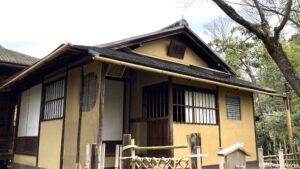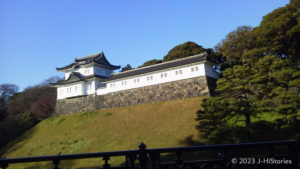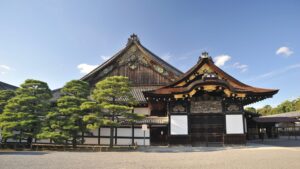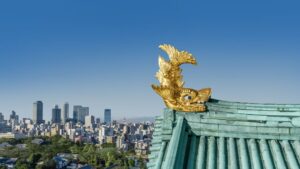Konkai Komyoji Temple, the base of the Shinsengumi samurai who followed the Bushido
On the days of the vernal equinox and the autumnal equinoxes, the Konkai Komyoji Temple offers a breathtaking view of the setting sun turning vermilion in the western sky. The temple was founded in 1175 when Honen, a founder of the Jodo sect of Buddhism, descended from Mount Hiei to spread his teachings here. Situated […]
Thomas Blake Glover, a brilliant turnaround from a weapons merchant to a contributor to Japan’s industrialization
Glover House stands as the most renowned Western residence constructed within a foreign settlement in Nagasaki. It holds the distinction of being one of Japan’s World Heritage sites: the Meiji Industrial Revolution; Iron, Steal, Shipbuilding, and Coal Mining. In 1859, Thomas Blake Glover embarked on a journey to Japan as an employee of the tea […]
Cherry Blossoms and Red Leaves at Hakodate Goryokaku Fort
Goryokaku Fort (五稜郭) is Japan’s first western-style star fort located in Hakodate. The view from the top of the observatory, situated 90 meters above the ground of Goryokaku Park Tower, offers a truly spectacular sight. The iconic five-star shape, filled with approximately 1,600 cherry blossom trees in spring and adorned with vibrant autumn leaves in […]
The Standing Original Castle in Japan, the History of Inuyama Castle Lord, Narusa Masanari
Inuyama Castle, a National Treasure, stands on a small mountain overlooking the Kiso River, dating back to 1537. It holds among Japan's five castles designated a national treasure, including Himeji, Matsumoto, Hikone, Inuyama, and Matsue. The castle was constructed during the tumultuous Warring States period and a dizzying array of castle owners were changed due […]
Samurai Tea Ceremony, Joan is The Best Teahouse to Visit
There are three existing tea rooms in Japan designated as national treasures. They are the Taian at Myokian in Kyoto built by a tea master, Sen-no-Rikyu, the Mittan at Daitokuji Temple by Kobori Enshu, and the Joan at Urakuen Garden in Aichi prefecture by Oda Nagamasu in his later life. Oda Nagamasu, also known as […]
Tsurugajo Castle in Aizu, A symbol of samurai loyalty during the Meiji restoration
Bells rang in the center of the castle town of the Aizu domain, signaling the invasion of Meiji government forces. Despite the Aizu domain's allegiance to the Tokugawa Shogunate and generations of shoguns, the castle fell under incessant bombardment. This is in contrast to the Shogun's residence, Edo Castle, which surrendered without bloodshed. Why did […]
Takayama Festival (Spring and Autumn), Keep your eyes on Karakuri doll’s performance
In Spring, the Karakuri doll scatters a lot of cherry blossoms to commemorate the arrival of spring. In Autumn, one small Karakuri doll moves by hanging and moving across several bars one by one riding piggyback on the Hotei, who is known as a deity of good luck. People watch its success breathlessly. Once it […]
Explore Tokyo’s Imperial Palace: Edo Castle Ruins and the Legacy of the Samurai Era
Explore Tokyo’s Imperial Palace: Edo Castle Ruins and the Legacy of the Samurai Era
Nijo-jo Castle Watched the Rise and Fall of Tokugawa Shogunate
Nijo-jo Castle - a UNESCO World Heritage and National Treasure site - is a residence of successive Tokugawa shoguns in Kyoto. This stunning castle had witnessed the growth, development, fall, and eventual end of the Tokugawa shogunate. What was the final stage of the Tokugawa shogunate that Nijo-jo Castle saw? How did the last shogun, […]
Why was Nagoya Castle built? For the iron defense of the Tokugawa Shogunate
Nagoya Castle was built by a warlord, Tokugawa Ieyasu, as a solid fortress in 1612, just two years before the Winter Siege of Osaka against the Toyotomi clan. After Ieyasu's victory, Nagoya Castle kept the Western lords in check in the middle of the Tokaido road connecting Edo (Tokyo) and Osaka. He was eager to […]










